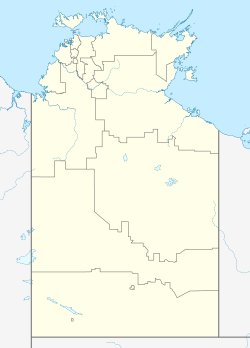Coomalie Creek Airfield | |||||||||||
|---|---|---|---|---|---|---|---|---|---|---|---|
 Coomalie Creek Airfield in 2008 | |||||||||||
| Summary | |||||||||||
| Airport type | Private | ||||||||||
| Owner | Richard Luxton | ||||||||||
| Location | Coomalie Creek, Northern Territory | ||||||||||
| Elevation AMSL | 175 ft / 53 m | ||||||||||
| Coordinates | 13°00′35.5″S131°07′49″E / 13.009861°S 131.13028°E | ||||||||||
| Map | |||||||||||
| Runways | |||||||||||
| |||||||||||
Coomalie Creek Airfield was a Royal Australian Air Force (RAAF) airfield built in 1942 in what is now the locality of Coomalie Creek, Northern Territory, Australia during World War II. [1] The airfield fell into disuse after the war ended. Since purchasing the surrounding land in 1977, private owners have restored the runway and rebuilt some wartime buildings to preserve the airfield's history. [2] It was listed on the Northern Territory Heritage Register in 2011, along with a nearby anti-aircraft battery that was used for airfield defence. [3]

